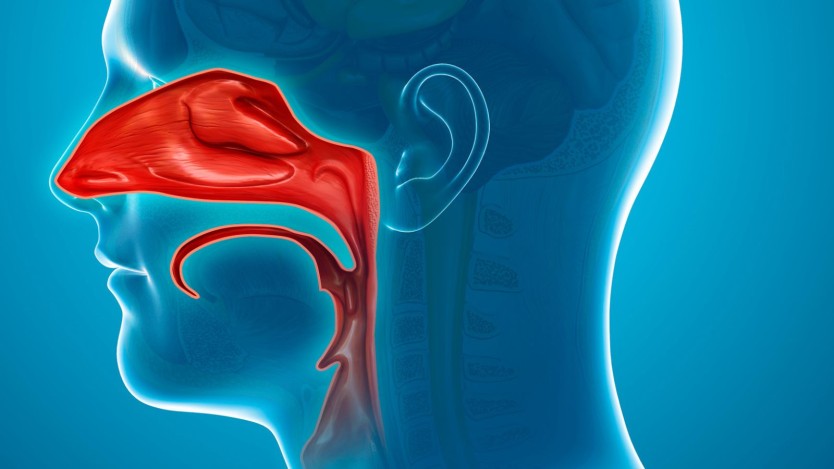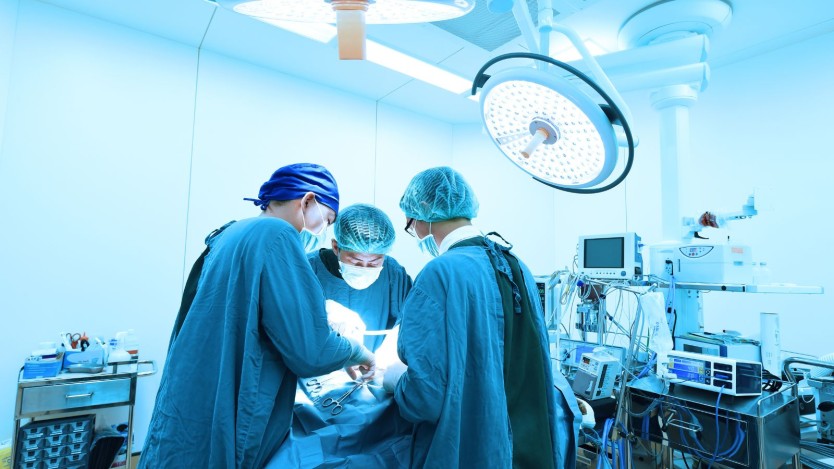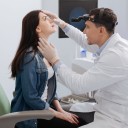Turbinate hypertrophy: what are they, causes, symptoms and treatment

- What is turbinate hypertrophy?
- What are the causes of turbinate hypertrophy?
- Symptoms of turbinate hypertrophy
- Diagnosis of turbinate hypertrophy
- Which treatments solve turbinate hypertrophy?
- Radiofrequency treatment for turbinate hypertrophy
- Request a surgical assessment consultation with Operarme
- Turbinate hypertrophy prevents airflow from entering the nasal cavity due to obstruction.
- Pharmacological treatment is not always effective, so surgery is the only effective treatment.
- Radiofrequency in the turbinates is used to reduce the size of the turbinates and, in addition, this surgical method is minimally invasive.
What is turbinate hypertrophy?
Hypertrophy is an increase in the volume of some part of our body. Consequently, turbinate hypertrophy is an inflammation of the turbinates. This alteration is sometimes intermittent but can become chronic, causing persistent nasal congestion.
The turbinates are a nasosinusal structure located inside the nose, on both sides of the nasal cavity and separated by the nasal septum. There are three turbinates on each side, the upper, middle and lower turbinates.
Their position is staggered, one above the other, from largest to smallest, with the one with the greatest volume being the lower one and the one that tends to cause nasal obstruction. The nasal turbinates are covered with mucous membranes containing numerous blood vessels, which are very sensitive.

Do you need turbinates reduction surgery?
Request a free and immediate appointment with our specialists in Otorhinolaringology
The main function of the turbinates is to direct the flow of air into the nasal cavity. They are responsible for humidifying, filtering and warming the air that reaches the lungs, thus improving our breathing.
The inferior turbinates regulate airflow by congesting and decongesting the cavernous tissue, i.e. by increasing and decreasing its size. Therefore, when there is something that has caused localised hypertrophy, there is an obstruction that does not allow airflow to pass through.

There are several factors that can alter the functioning of the turbinates, such as colds, allergies, tobacco smoking or alcohol consumption, among others, thus causing inflammation or hypertrophy of the turbinates. Moreover, as we mentioned earlier, the structure of the turbinates has numerous blood vessels that are very sensitive to changes in temperature.
However, in the following section we will explain, with more precision, the causes of the alteration in the size of the turbinates. We therefore invite you to read on and find out more about the causes, symptoms and treatment for turbinate hypertrophy.
What are the causes of turbinate hypertrophy?
Turbinate hypertrophy is an enlargement of the mucous membranes caused by nasal congestion with a chronic inflammatory feature. Normally, this disorder is caused by allergic processes such as allergic rhinitis. However, there are other causes that lead to changes in the size of the turbinates:
- Changes in hormones. There are a number of factors that can alter hormone production, such as drugs, pregnancy or puberty, causing an increase in mucous tissue and, consequently, the volume of the turbinates, contributing to nasal obstruction.
- Advanced age. The degradation of the organism and a series of underlying pathologies can favour the development of turbinate hypertrophy. As a result, there would be difficulty breathing through the nose due to nasal obstruction and abundant secretion of mucus.
- Overweight. Obesity causes a decrease in lung volume and requires more effort to breathe, leading to a series of abnormalities in the nasal passages, such as turbinate hypertrophy.
- Being in inappropriate spaces. The airways work harder to breathe when exposed to toxic substances or low temperatures. This leads to an increase in the size of the turbinates, as well as other parts exposed to the same effort.
- Smoking and/or alcohol consumption. Both of these lifestyle habits increase the likelihood of turbinate change. The functioning of the structure degrades until it collapses and causes nasal obstruction.
- Acute or chronic sinusitis. Inflammation and involvement of the paranasal sinuses can lead to hypertrophy of the turbinates. These change their size and obstruct the nasal passages, making it possible to breathe only through the mouth.
- Deviated nasal septum. When there is a deviated septum, the work of breathing is more difficult, so the turbinates make a greater effort and the turbinates are altered.
- Pharmacological treatment. Some steroid treatments or nasal application may cause inflammation of the nasal structure and lead to turbinate hypertrophy.
Symptoms of turbinate hypertrophy
Turbinate hypertrophy is an alteration in the size of the turbinates. This inflammation in the nasal structure can be intermittent or become chronic, leading to persistent nasal obstruction over time.
Thus, the symptoms caused by turbinate hypertrophy are diverse, as well as asymptomatic or very annoying. The most common are:
- Permanent nasal congestion
- Physical tiredness
- Apnoea and sleep disorders
- Difficulty breathing through the nose
- Hearing problems and discomfort
- Nosebleeds
- Loss of smell
- Facial pain
- Snoring
We remind you that these symptoms can be intermittent or asymptomatic, without discomfort. However, in both cases, if left untreated, they can become chronic. So, if you have any of the symptoms mentioned above, we advise you to see a specialist to find out the main cause of these complaints.
In the following way, you can continue reading about the diagnosis of turbinate hypertrophy, as well as the treatment to solve it. These are simple and relatively quick interventions that will give you a better quality of life.
Diagnosis of turbinate hypertrophy
In order for the ENT specialist to diagnose turbinate hypertrophy, he or she will examine the nasal cavities, which can be done in different ways. However, the most common is rhinoscopy with a minimally invasive manoeuvre lasting approximately 5 to 10 minutes.
This test allows the specialist to see inside the nostrils through the rhinoscope, an instrument that separates the nasal ala from the septum, increasing the field of vision, together with a front mirror and a light source.
Thus, depending on the technique used, rhinoscopy is classified as follows:
- Anterior rhinoscopy: this test is performed through the nose. The ENT specialist visualises the elements of the anterior portion of the nostrils, such as the mucosa, the nasal vestibule, the inferior turbinates and sometimes the middle turbinates, i.e. the roof of the nostrils and the choanae. During the test, you will be in an armchair, with your head straight, your mouth closed and breathing normally, calmly and through your nose.
- Posterior rhinoscopy: unlike the previous one, this test is performed through the mouth. In this test, the doctor views the elements at the back of the nostrils, i.e. the upper turbinate, middle turbinate, tail of the lower turbinate and the vomer. A speculum, a front mirror and an external light source are used for the procedure. In posterior rhinoscopy, you will be seated in the chair, with your head straight and slightly forward. When the examination is performed through the mouth, you will hold your mouth open, with your tongue relaxed inside it, and breathe calmly through your nose.

Rhinoscopy does not require prior preparation; however, it is advisable to clean the nasal passages beforehand, using saline solutions.
In anterior rhinoscopy, where the nasal route is used, a vasoconstrictor can be used to reduce the volume of the turbinates. On the other hand, if the patient is nauseated during the posterior rhinoscopy, a topical anaesthetic may be used during the examination, although this is not usual.
In addition, during the consultation, the doctor will ask you about your lifestyle habits, the symptoms you have, previous illnesses, etc. All of this will help him or her to make a more accurate diagnosis in order to propose the most appropriate treatment and solve the problem.
Which treatments solve turbinate hypertrophy?
Turbinate hypertrophy is the excessive enlargement of the inferior turbinates, causing nasal obstruction. Since each person presents a different case, each patient requires a particular treatment, depending on the cause that is causing the nasal blockage.
There are different treatments to solve the hypertrophy of this nasal structure, including natural treatment, pharmacological treatment and different surgical treatments, as well as surgery for turbinate hypertrophy. Below we explain what each of them consists of:
Preventive treatment
As you know, the appropriate treatment depends on the cause of turbinate hypertrophy. So if your problem is related to allergies or substances that have irritated the area, you may be able to opt for natural treatment. Ideally, however, you should still see your doctor to diagnose the reason for the allergy as well as the turbinate hypertrophy.
Some of the safety measures for this treatment include allergy-proofing your home by removing pollen, dust and pet dander, if you have it.
Drug treatment
Drug treatment is the most common treatment to reduce the size of the turbinates. The typology of these medications is based on corticosteroid nasal sprays, allergy medications, as well as avoiding exposure to environmental irritants. All of these help to shrink the turbinates as well as improve nasal breathing.
However, treatment with medication is not always effective, so other options may be recommended to solve the problem and its main causes and symptoms.
Therefore, when treatment has not achieved a persistent effect over time, turbinate hypertrophy can become chronic. It is at this point that the specialist in Otorhinolaryngology recommends eliminating the problem surgically, which is the only effective way.
Surgical treatments
The surgical solution to turbinate hypertrophy comprises several methods of action. Some of them remove part of the bony structure and others reduce the turbinate tissue. Among the treatments are:
- Turbinoplasty. This technique, also known as surgical fracture, modifies the position of the turbinates. To do this, the surgeon uses endoscopic tools and accesses the inside of the nostrils until reaching the turbinates. During the operation, the size of the turbinate is reduced by sectioning a small part of it.
- Turbinectomy. During this procedure, endoscopic tools are also used but, unlike turbinoplasty, all or part of the inferior turbinate is removed, cutting only the tissue necessary to eliminate the nasal obstruction.
- Radiofrequency. This technique is the most commonly used to treat turbinate hypertrophy. To proceed, electrodes are inserted through the nostrils and placed on the turbinates. Electromagnetic energy circulates through the electrodes, increasing the temperature of the tissues without damaging the adjacent structures, in order to reduce the size of the turbinates.
- Laser. This procedure cauterises the nasal mucosa to reduce the size of the turbinates and reduce nasal obstruction.
If your case of turbinate hypertrophy needs a solution now, you can request a free surgical assessment appointment by clicking on the image below:

Do you need turbinates reduction surgery?
Request a free and immediate appointment with our specialists in Otorhinolaringology
Radiofrequency treatment for turbinate hypertrophy
The turbinate surgery by radiofrequency is a minimally invasive and painless procedure that is performed on an outpatient basis, so you can go home the same day of the intervention without the need for hospitalisation. Below we explain what the day of surgery would be like:
Once you are ready for surgery, you will go to the operating theatre where you will meet the surgeon, the anaesthetist and a member of the nursing team.
Once on the stretcher, the surgery will begin:
- You will be given a local anaesthetic to numb the area.
- After the anaesthesia has taken effect, the surgeon will insert the tip of a needle-tipped terminal through the nostrils and puncture the front of the inferior turbinate.
- This tool is connected to a radiofrequency equipment that transmits energy to the turbinate tissue to reduce the volume of the turbinates, making room for air to enter through the nostrils.
- Once the size of the turbinates has been reduced, the surgeon will remove the instrument from the nasal cavity and you will be taken to the recovery room to recover from the anaesthesia.
Once all the anaesthetic has worn off, you have recovered from its effects and the surgeon has checked that everything has gone well, you can leave the hospital.
Radiofrequency turbinate surgery lasts approximately 15-20 minutes. Moreover, as we mentioned before, this operation is an outpatient procedure, so you can leave the hospital the same day.

Recovery after turbinate hypertrophy surgery
It is most common that, after the operation, inflammation and mucus will appear inside the nose. However, this will disappear as the days go by.
To promote recovery, it is advisable to follow the instructions of the doctor who has dealt with your case:
- Nasal washes. The recovery period requires keeping the operated area clean, so it is necessary to wash the nose with physiological saline solution or saline water to promote healing and prevent subsequent infections.
- Avoid heat. During the first few days, it is important to avoid exposure to heat, as well as physical exercise or taking aspirin, which can contribute to the development of nosebleeds.
Full recovery from turbinate hypertrophy surgery is complete 10 to 15 days after the operation. However, you will notice the improvement as the days go by.
Request a surgical assessment consultation with Operarme
If you have nasal obstruction or discomfort due to turbinate hypertrophy, you can request a free surgical assessment consultation with one of our specialists in Otorhinolaryngology. Our Patient Service Team will be at your disposal to solve any questions you may have and/or to arrange the assessment consultation.
You can request a surgical assessment consultation by calling at +34 91 141 33 56, or by clicking on the image below:

Do you need turbinates reduction surgery?
Request a free and immediate appointment with our specialists in Otorhinolaringology
Medical disclaimer: All the published content in Operarme is intended to disseminate reliable medical information to the general public, and is reviewed by healthcare professionals. In any case should this information be used to perform a diagnosis, indicate a treatment, or replace the medical assessment of a professional in a face to face consultation. Find more information in the links below:

